The 2014 National Climate Assessment reads like a postcard from the apocalypse. Here’s what it says the Northeast can expect from climate change: heat waves, sea-level rise, coastal flooding, intense rainstorms, and blizzards. Freeways, farms, and fisheries will be “increasingly compromised.” And remember Hurricane Sandy? All told, 150 deaths, $80 billion in damage. We can anticipate more hurricanes like that.
Amid this grim litany are scientists who are trying to better understand—and thus predict, plan for, or prevent—some of the worst impacts of climate change. One of them is Anthony Janetos, a College of Arts & Sciences professor of earth and environment and director of BU’s Pardee Center for the Study of the Longer-Range Future. Janetos is part of the team designing the interactive National Climate Indicators System, which will integrate data from more than a dozen federal agencies to track issues from temperature and rainfall to the chance of subway flooding and the spread of Lyme disease. The pilot system is expected to launch in spring 2015.
“We’ve designed this as an end-to-end system that goes from changes in the actual physical climate system through climate impacts and then responses,” says Janetos, who led the planning phase of the project. “And we’ve taken a very comprehensive approach. We’ve looked at everything from agriculture to human health to fresh water to coastal vulnerability to transportation infrastructure.”
Currently, climate data is collected, stored, and disseminated by many federal, state, and local agencies across the United States. This makes it tricky to find and use data, so conducting interdisciplinary, cross-agency science can be difficult. One of the achievements of the project, says Janetos, has been getting 13 major federal agencies to the table, including the National Oceanic and Atmospheric Administration, the National Aeronautics and Space Administration, and the Centers for Disease Control and Prevention (CDC). “It’s a hard thing for them. We’re asking them to do something in collaboration with each other, so it’s not a natural act for many of them,” he says. “And yet they consistently said, okay, this is something we should do.”
The bigger challenge is figuring out what to measure and how to do it. Some things, like ground temperature, flood levels, and factory emissions, are easy. But Janetos and his group want to go further, somehow quantifying complex impacts on human health and measuring how communities are actually adapting to climate change or preparing for it. “That’s a really hard intellectual problem,” says Janetos. “If you ask different scientists, ‘What would you actually measure?’ you get a different answer from every person.”
To tackle this problem, the group devised 12 sectors likely to be impacted by climate change—like oceans, agriculture, and human health—and built an interdisciplinary team to examine each. To collect a variety of perspectives, the teams contained not only physical scientists, but also social scientists, economists, and other experts. Each team created a model of how their sector works and used that to help them choose and justify indicators.
For example, the team looking at human health wondered if the likelihood of contracting Lyme disease might rise as the climate changes. But how could they track this complicated question? By mapping the growing range of ticks? Collecting the number of reported cases of Lyme disease? Measuring when a county hits a threshold number of cases? In collaboration with the CDC, they decided to include all these factors, creating a more subtle and sophisticated tracking tool. “This gives us a more accurate indication of whether you’re likely to be exposed to Lyme in a certain county,” says Melissa Kenney, an environmental decision scientist at the University of Maryland, who is directing the implementation of the pilot system. On the animated Lyme disease map the team is creating, she says, “you can just see it exploding” in certain regions, like the Northeast and the Mid-Atlantic states. “It’s really scary and really interesting at the same time, because you can understand all the underlying factors.”
Kenney notes that the indicator system will make all the metadata available to anyone who wants it. She hopes this feature will make the tool especially useful for scientists and policy makers. “That’s the golden ticket: objective information that can be used for decision-making,” she says. “We hope people will take the data and innovate with it.”
The pilot system will start with about 15 indicators. The full system, which should be up and running within two years, will have many more. While the final list is still in flux, Janetos says, it will include indicators of global, national, and regional temperature changes, loss of Arctic sea ice, and the annual start of spring. He hopes that scientists, politicians, and the public will quickly see the value of the system and push for it to continue. “We want to help the agencies build support to maintain this,” he says. Because, like climate change itself, “this is not a project with a beginning, a middle, and an end.”
A version of this story appears on the BU Research website.


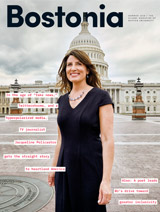





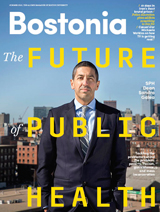

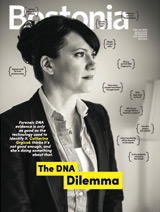

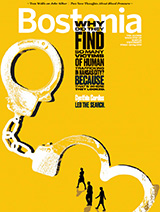




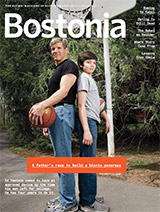









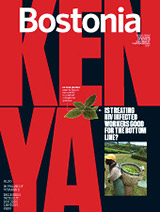













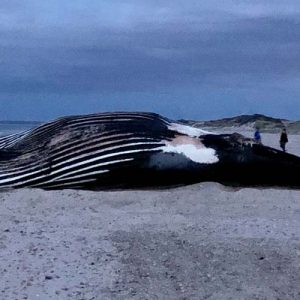



Related Stories
Fighting Tick-Borne Disease with Computer Science
Michael Dietze uses predictive models to see how ecosystem change affects tick populations
BU Trustees Approve Aggressive Climate Action Plan
Effort prepares University for global temperature rise
Putting Cities on the Climate Map
CAS researcher, undergrad UROP project tackle heat island problem
Post Your Comment